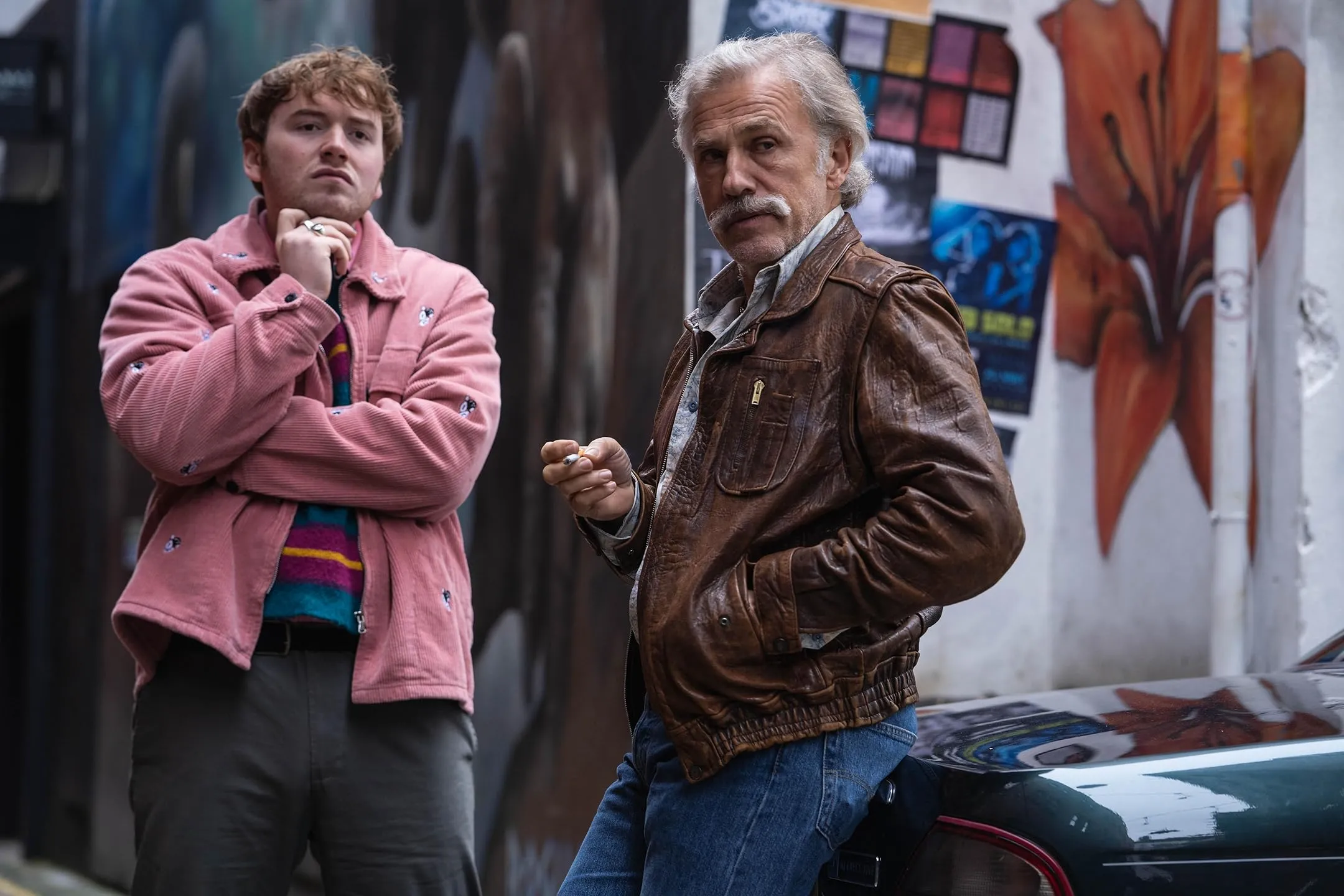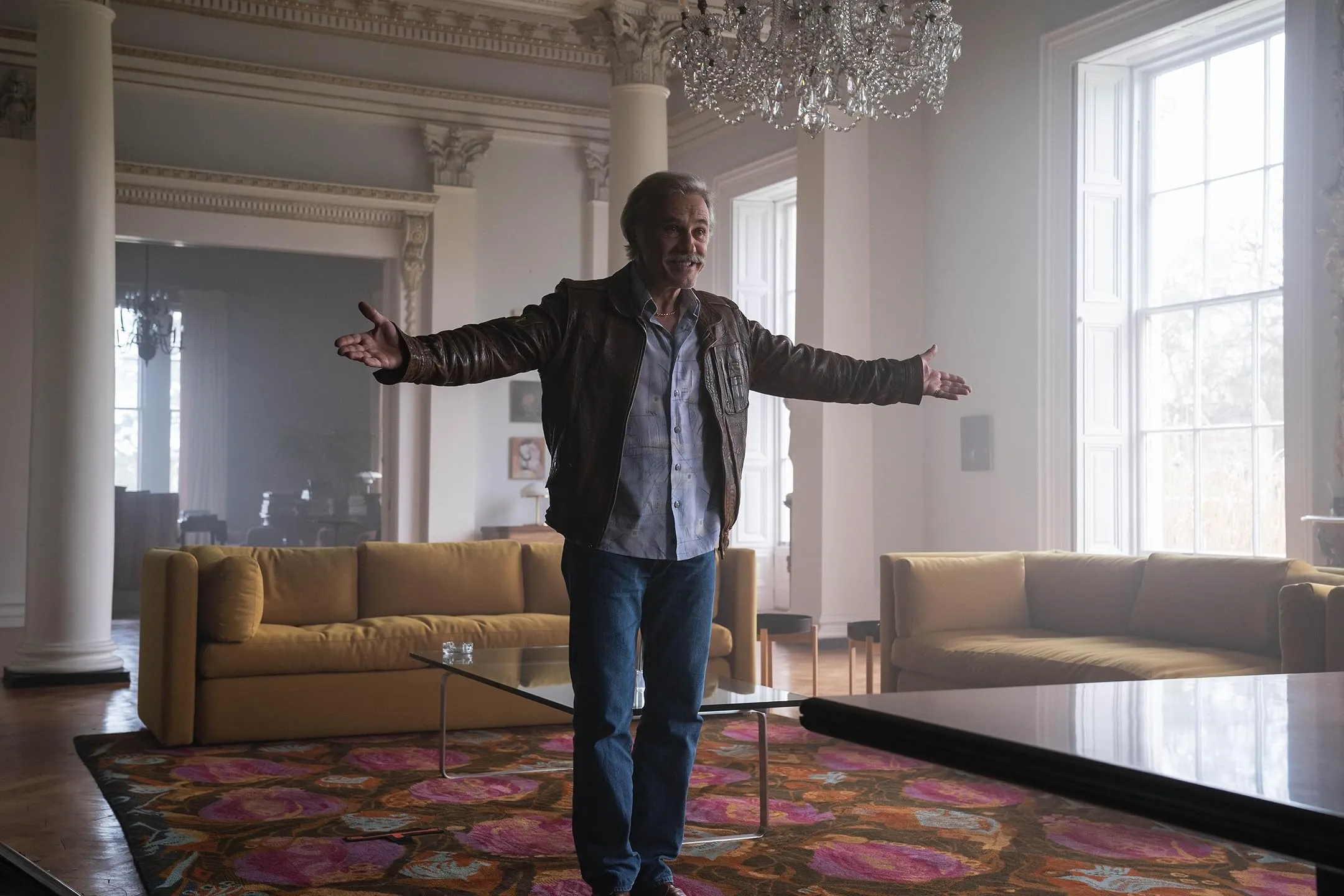Danny Dolinski appears as a veteran assassin dealing with physical setbacks from arthritis and a recent surgery. He faces a harsh change when his company informs him that his position is being terminated in favor of a new recruit. This twist sets the stage for a shift from field assignments to a mentoring role.
The story follows the friction between Danny and his assigned trainee, Wihlborg, whose reckless methods and modern quirks sharply contrast with Danny’s seasoned, disciplined approach. Their conflict unfolds through a mission in Belfast, where professional rivalry meets personal challenges. The narrative tracks their progress as the veteran struggles with his fading prowess while the newcomer grapples with the expectations of a high-pressure job.
The film blends brisk, high-stakes action with quieter scenes that expose the characters’ inner lives. Fast-paced sequences deliver adrenaline while calmer moments reveal the emotional toll of a life spent in the shadows. Intermittent humor arises from the clash of personalities and work styles, offering relief amid the tension.
This interplay between rapid sequences and reflective pauses creates a rhythm that invites viewers to consider the weight of legacy and the cost of change. An open question lingers: how will these contrasting forces shape the fate of a life built on precision and risk?
Character Insights and Dynamics
Danny Dolinski emerges as a veteran assassin whose expertise is marred by the effects of physical pain and the rapid changes in his profession. His life outside of work is marked by a penchant for excess, a sharp contrast to the internal conflict he experiences as his career slips away from his grasp.
His actions and decisions reveal a man caught in a clash between the thrills of his past and the painful reminder of his diminishing capabilities.
Wihlborg enters the scene as a young hitman with clear ambitions and a flair for the unconventional. His eccentric style, characterized by small details like his painted fingernails, reflects the attitudes of his generation in a field traditionally dominated by a tougher persona. His mistakes and the pressure to prove himself offer a look into the struggles of maintaining identity in a challenging environment.
Anata serves as a steady presence amid the tension. A trusted confidante of Danny, her role in the story remains somewhat ambiguous, lending a softer edge to the otherwise hard-edged world of contract killing. Her own personal and romantic issues provide a contrast to the harsh realities of the assassin’s life, adding layers of emotion to the narrative.
The relationship between Danny and Wihlborg forms a focal point. Their frequent clashes highlight the gap between seasoned experience and raw ambition. Several key scenes capture their evolving rapport, from moments of sharp criticism to instances of unexpected support. These exchanges paint a picture of a professional connection tested by differing outlooks and the inevitable shift of power from one generation to the next. This dynamic leaves the audience pondering the true cost of change and the sacrifices made in the pursuit of personal survival.
Themes and Emotional Resonance
Danny Dolinski faces the heavy weight of a long career marked by physical setbacks and personal sacrifice. His struggle with joint pain and diminished capability reveals a character caught between a storied past and an uncertain future.
His professional life, once defined by precision and fearlessness, now carries the burden of self-doubt and physical limitations. This inner turmoil speaks to the hard truth of growing older in a field where youth and vigor command respect.
The relationship between Danny and his trainee, Wihlborg, is marked by stark contrasts in approach and mindset. Wihlborg brings an energetic yet impulsive style that often clashes with the measured techniques Danny honed over decades. Their encounters highlight the friction between established habits and fresh, sometimes reckless, methods. This interplay offers a study in how traditional expertise copes with new perspectives, prompting both characters to question what truly defines success in their perilous line of work.
The film raises thoughtful questions about the cost of a life spent taking lives. It presents a space where professional duty collides with personal ethics. Danny’s careful, if reluctant, adherence to a code of conduct stands against a backdrop of rapid changes and moral shortcuts embraced by a newer generation. This tension invites a closer look at how each character justifies their actions and reconciles their roles in a career that demands difficult choices every day.
Certain scenes capture moments of unguarded emotion, where Danny’s vulnerability shines through his hardened exterior. His reflections on past decisions and the search for a viable future add layers of personal depth. These glimpses into his inner world prompt viewers to consider how one reconciles a dangerous profession with the desire for a life of meaning, leaving an open question about the nature of true redemption.
Visual Style, Direction, and Action Choreography
Simon West’s work molds the film’s feel through a mix of energetic sequences and reflective interludes. His approach weaves striking action moments with quieter scenes that reveal character struggles and personal costs.
Danny’s challenges, especially those born from his physical setbacks, influence the design of set pieces. Scenes where he adapts to his limitations by employing unexpected tactics create memorable moments that highlight his long career in a physically demanding role.
Action sequences are crafted with care, showcasing scenes that both surprise and provoke thought. One sequence stands out where Danny uses improvised defenses that hint at his seasoned experience, while also underscoring the physical toll his profession has exacted. These segments possess an engaging quality, marked by precise timing and inventive choreography that serve the story as much as they entertain.
The film makes ample use of its settings, with the scenic landscapes of Northern Ireland providing a striking backdrop. The camera often shifts from wide, panoramic views that capture natural beauty to tight shots that focus on the characters’ expressions. This shift reinforces the contrast between the grandeur of the locations and the intimate nature of the characters’ struggles. The visual composition, marked by deliberate framing and a well-considered color scheme, supports the narrative by reflecting both the grit and subtle emotional currents present in the story.
Timing plays a key role in how the film unfolds. The rhythm oscillates between brisk, high-energy sequences and slower moments that allow the viewer to absorb the weight of personal conflicts and professional challenges. One is left to consider how these carefully orchestrated visual moments might reshape expectations within this familiar genre.
Screenplay, Dialogue, and Humor
The screenplay lays out a clear narrative path centered on a veteran assassin forced to shift roles. The structure is straightforward, detailing his transition from an active career to a role centered on mentoring. The narrative maintains clarity throughout, even if some thematic hints remain lightly explored in a fast-paced, action-driven plot.
The spoken exchanges among the characters offer insight into their distinct personalities. The veteran’s remarks reflect years of experience, while his young protégé expresses modern attitudes through brisk, sometimes offbeat comments.
Certain lines spark genuine amusement, providing moments of levity amidst tension. At times, dialogue misses opportunities to deepen the connection between contrasting views, but key conversations reveal the clash of life philosophies and professional methods.
Lighthearted moments surface through situational humor and the interaction of differing generational styles. Instances like witty banter during critical operations and unexpected quips add a refreshing touch to the narrative.
These elements counterbalance the more serious themes without undercutting the film’s intensity. The interplay of humor and serious tone invites reflection on how a sharp wit can influence character dynamics in a high-stakes environment, leaving open questions about the role of laughter in challenging professions.
Production Design, Cinematography, and Overall Impact
The film’s production design offers a clear window into its world. Costume choices mirror the characters’ pasts and present, while the set environments evoke a tangible sense of time and place. The details in props and decor effectively communicate the characters’ personal journeys, contributing a distinct atmosphere that resonates with the film’s narrative.
Northern Ireland’s landscapes play a significant role, infusing authenticity into the storytelling. The use of wide, sweeping vistas contrasts with intimate indoor scenes, and the lighting underscores the mood shifts throughout the film. A deliberate color scheme and recurring visual motifs reinforce the emotional tone and enhance the viewer’s engagement.
Together, the technical aspects and visual elements collaborate to support the story at its core. The film’s aesthetic choices, from meticulously chosen set pieces to the dynamic interplay of natural light, work in harmony to underline the characters’ struggles and triumphs.
Observing these details invites reflection on how visual storytelling shapes audience perceptions and emotional reactions, leaving us to ponder whether these creative decisions deepen our connection with the unfolding drama or merely highlight the challenges of translating character complexity into striking visuals.
The Review
Old Guy
The film offers memorable visual moments and solid action sequences, yet its uneven narrative and missed thematic opportunities hold it back. It delivers engaging character dynamics and a visually striking environment, though the pacing sometimes undercuts the deeper emotional layers. Overall, it's a respectable effort in reinventing a familiar archetype, but it leaves room for improvement.
PROS
- Strong lead performances
- Visually striking cinematography
CONS
- Uneven pacing at times
- Missed opportunities in thematic depth
- Underdeveloped secondary roles




















































